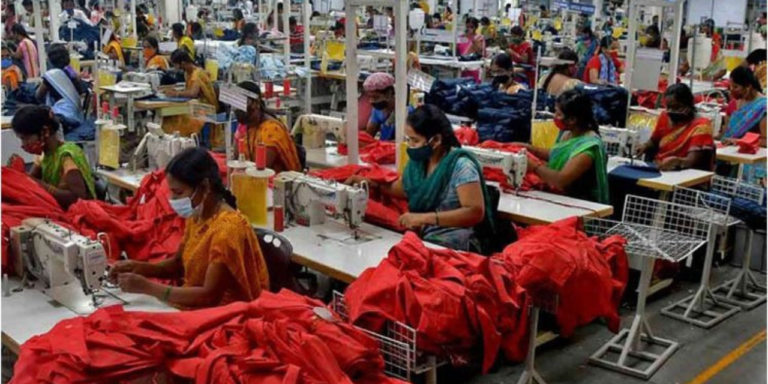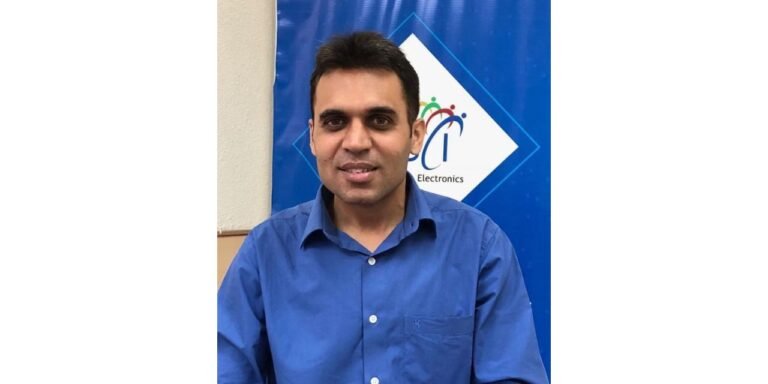
Himson Issues Public Notice on Patent Rights for Texturing Machine Technology in India
Himson Engineering Private Limited, Surat, Gujarat, has issued a public notice concerning patent rights related to a false-twist texturing machine used for processing multifilament threads. The notice states that Oerlikon

Defossilization Decoded: Patrick Van Waes on Susterra®’s Renewable Edge
Patrick Van Waes, Global Marketing Director, Susterra® propanediol The TVC Media Team had the privilege to meet Patrick Van Waes, Global Marketing Director for Susterra® propanediol at Primient Covation, ahead

India reportedly planning mandatory labelling for home textiles
India is moving toward a major policy shift in the domestic textile and apparel market, with plans underway to introduce mandatory labelling requirements for garments and home textiles. The proposed
Meghalaya gets first Integrated Textile Tourism Centre
Meghalaya marked a major milestone in its textile and cultural development landscape with the inauguration of its first Integrated Textile Tourism Centre (ITTC) at Nongpoh, Ri-Bhoi. The launch, held on

BRANDING OF INDIAN TEXTILES
India’s global textile identity is undergoing a strategic transformation as the country strengthens the branding, competitiveness and export readiness of its apparel, textile and handicraft sectors. With exports touching USD

NATIONAL TECHNICAL TEXTILES MISSION (NTTM’s) Year end updates
India’s push to scale up its technical textiles sector has gathered strong momentum under the National Technical Textiles Mission (NTTM), launched in 2020 with a dedicated outlay of ₹1,480 crore.

Defossilization Decoded: Patrick Van Waes on Susterra®’s Renewable Edge
Patrick Van Waes, Global Marketing Director, Susterra® propanediol The TVC Media Team had the privilege to meet Patrick Van Waes, Global Marketing Director for Susterra® propanediol at Primient Covation, ahead

India reportedly planning mandatory labelling for home textiles
India is moving toward a major policy shift in the domestic textile and apparel market, with plans underway to introduce mandatory labelling requirements for garments and home textiles. The proposed
Meghalaya gets first Integrated Textile Tourism Centre
Meghalaya marked a major milestone in its textile and cultural development landscape with the inauguration of its first Integrated Textile Tourism Centre (ITTC) at Nongpoh, Ri-Bhoi. The launch, held on

BRANDING OF INDIAN TEXTILES
India’s global textile identity is undergoing a strategic transformation as the country strengthens the branding, competitiveness and export readiness of its apparel, textile and handicraft sectors. With exports touching USD

NATIONAL TECHNICAL TEXTILES MISSION (NTTM’s) Year end updates
India’s push to scale up its technical textiles sector has gathered strong momentum under the National Technical Textiles Mission (NTTM), launched in 2020 with a dedicated outlay of ₹1,480 crore.

2025 Year End Review for Department for Promotion of Industry and Internal Trade
India’s Department for Promotion of Industry and Internal Trade (DPIIT) has closed 2025 with a sweeping set of achievements that underline the country’s expanding industrial, manufacturing and innovation landscape. From

BRANDING OF INDIAN TEXTILES
India’s global textile identity is undergoing a strategic transformation as the country strengthens the branding, competitiveness and export readiness of its apparel, textile and handicraft sectors. With exports touching USD

NATIONAL TECHNICAL TEXTILES MISSION (NTTM’s) Year end updates
India’s push to scale up its technical textiles sector has gathered strong momentum under the National Technical Textiles Mission (NTTM), launched in 2020 with a dedicated outlay of ₹1,480 crore.

2025 Year End Review for Department for Promotion of Industry and Internal Trade
India’s Department for Promotion of Industry and Internal Trade (DPIIT) has closed 2025 with a sweeping set of achievements that underline the country’s expanding industrial, manufacturing and innovation landscape. From
The Cotton Development and Research Association (CDRA) of the Confederation of Indian Textile Industry (CITI) has partnered with Beetle Regen Solutions to promote regenerative agriculture in Khargone, marking a revolutionary …
A partnership between CITI-CDRA and Beetle Regen Solutions Read More »
The agricultural drones market has emerged as a game-changer in the agriculture industry, transforming traditional farming practices with cutting-edge technology. These unmanned aerial vehicles (UAVs) equipped with advanced sensors and imaging capabilities …
We recently issued a press release on “Agricultural Sprayers Market” that we believe would be of great interest to your readers. We kindly request your consideration in publishing our press …
Agricultural Sprayers Market | Press Relase by Persistence Market Research Read More »
-
SIMA lauds exemption of Polyester Staple Fibre imports from Quality Control Order under Advance Authorization Scheme
-
Scientists develop self-repairing wearable textiles that monitor heart signals and repel bacteria
-
Indian textile ministry clears 15 R&D projects worth ₹32.25 cr
-
Sea Silk
-
India's airbag market to rise to ₹6K-7K cr by FY2027: ICRA
-
Smart & Intelligent Textiles: A New Horizon For Garment And Fashion Designers
-
Lindström Group Takes Bold Strides Towards a Sustainable Future
-
Italian Textile Machinery at Techtextil, Mumbai, 2023
-
India Removes China from Azo Dye Test Exemption List for Imported Textiles
-
India's flexible packaging sector to grow by 5% in FY23: CRISIL

Powering Vision 2032: Expanding India’s Transmission Grid
By Varun Bhatia, Vice President, Electronics Sector Council of India India is tackling one of the greatest global challenges—climate change—through an ambitious renewable energy mission. The nation aims to generate over 600 gigawatts of renewable energy by 2032. Yet, the real challenge lies not in generation, but in transmission—delivering electricity to every home, business, and remote village. Transmission infrastructure, though often unnoticed, forms the backbone of India’s modern energy system. Transmission: The Backbone of India’s Power Network India’s energy framework relies on three essential pillars—generation, transmission, and distribution. Transmission lines carry electricity from distant plants to cities and villages at ultra-high voltages of 220, 400, 765 kV, and ±800 kV HVDC. By early 2025, India had built 4.92 lakh circuit kilometers (ckm) of lines above 220 kV, with a transformation capacity of 1,269 GVA—creating one of the largest synchronized grids in the world. This grid enables power exchanges of up to 118,740 MW, reducing the national energy deficit from 4.2% in 2014 to just 0.1% in 2025, making India a net power exporter. However, progress faces challenges. Only 8,830 ckm of lines were added in 2024–25, the lowest in a decade. The Right-of-Way (RoW) issue remains a key obstacle, as land acquisition often meets local resistance and delays. Recognizing this, the government amended the RoW policy in June 2024 and introduced new guidelines in March 2025 to ensure fair compensation and transparency. Why Vision 2032 Matters The National Electricity Plan (NEP) – Transmission, 2024 sets ambitious goals. By 2032, India aims to expand its network to 6.48 lakh ckm, boost transformation capacity to 23.45 lakh MVA, and raise HVDC capacity to 66,750 MW. Achieving these milestones will require an estimated ₹9 lakh crore investment. Government reforms—faster approvals, public-private partnerships (PPP), and state-level coordination—have made this sector increasingly attractive to investors. Private players now bring technology, efficiency, and cost savings, making transmission growth more sustainable and scalable. Transmission: Powering Economic Growth Transmission is more than just moving electricity—it drives economic development. Every industrial corridor, technology park, and rural enterprise depends on stable power. Projects like the Delhi-Mumbai Industrial Corridor thrive because of strong transmission networks. By February 2025, India’s Inter-State Transmission System (ISTS) linked the nation with 2.13 lakh ckm of lines. This connectivity has also transformed rural life. Through schemes like Saubhagya, millions of households gained electricity access. Rural schools are now digital, health centers use modern tools, and farmers power irrigation systems—all thanks to robust transmission. Electricity has become a force of inclusion and empowerment, bridging the gap between urban and rural India. Technology and Innovation in Transmission India’s next leap in transmission will come through technology-driven innovation. Digital substations, predictive analytics, and AI-powered monitoring systems will make grids smarter and more resilient. Since renewable sources like solar and wind fluctuate, future grids must adapt dynamically. Technologies like satellite-based monitoring and remote sensing can help detect faults early and optimize load management. India is also exploring underground and undersea transmission to overcome land challenges. Its leadership in high-voltage direct

Elementary Nonwovens Training Course
- 24 January, 2023 - 25 January, 2023
- INDA Headquarters Cary, NC
- http://www.inda.org/
- +1 919 459 3724
- registrar@inda.org inda.org/training

Intermediate Nonwovens Training Course
- 7 February, 2023 - 10 February, 2023
- INDA Headquarters, Cary, NC & The Nonwovens Institute, NC State University Raleigh, NC
- http://www.inda.org/
- +1 919 459 3724
- registrar@inda.org inda.org/training

Introduction to Spunbond & Meltblown Technology
- 28 February, 2023 - 03 March, 2023
- The Nonwovens Institute, NC State University Raleigh, NC
- http://www.inda.org/
- : +1 919 459 3724
- registrar@inda.org inda.org/training
Upcoming Trade Shows
Dubai World Trade Centre - DWTC
Dubai World Trade Centre - DWTC
Dubai World Trade Centre - DWTC


